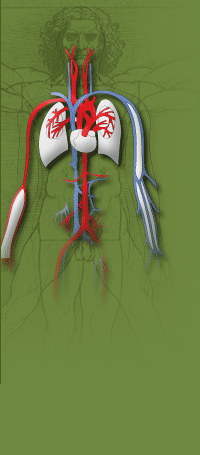|
Indications: You have been referred to Michigan Vascular Access for treatment of your clotted vascular access. You have been advised to undergo a percutaneous thrombolysis. This consists of a fistulogram for diagnosis of the problems with your graft or fistula, removal of the clot from the access, and whatever ballooning ("venoplasty"), or stent placement may be necessary to restore functioning of your graft or fistula. This procedure is done in the operating room with the aid of fluoroscopy (x-ray imaging). After numbing a spot over your graft or fistula, a needle or small plastic tube will be placed in the access and x-ray dye ("contrast") injected after the clot removed. Depending on the findings, a narrowing may be stretched with a balloon ("venoplasty"), a stent may be placed to prop open a narrowing that does not stay open after ballooning, or a stent may be placed to patch a hole in the graft. More than one puncture in the access is necessary The anticipated benefit of this procedure is restoration of your means for dialysis, hopefully without resorting to a catheter. Optimizing your vascular access for dialysis is important, as up to 20% of deaths in the dialysis population are attributed to insufficient access or complications of vascular access. Delay in replacing a catheter with either a well-functioning graft or fistula increases the risk of central stenosis (ruining the large veins near the heart), or catheter infection. The specific benefit of endovascular procedures is that generally no incision is required, and the x-ray imaging allows the surgeon to assess more of the graft and circulation than is possible through an incision. Risks and complications: There is no perfect or problem-free operation in vascular access. It is important to know that problems can and will occur to a certain percentage of patients. Most of these problems can be managed and corrected safely. Others will require major efforts, and some can result in permanent injury. You should understand and accept these risks before proceeding with any operation. Infection: Every operation that requires an incision or puncture carries a certain risk of infection and bleeding. The risk of infection with percutaneous or "endovascular" procedures (done only through punctures and not with incisions) carries much less risk of infection, and generally antibiotics are not given. Bleeding: Bleeding can occur during the operation, or afterward. Bruising is common, and resolves within weeks of the operation. A hematoma (collection of blood under the skin) may occur. These generally also resolve on their own in weeks. Occasionally, an operation may be recommended to drain the blood or tissue fluid. Rarely, such a collection may become infected, at which time drainage is required. Blood clots: The amount of clot in a graft or fistula is generally small. Clot is dissolved, torn into small pieces or removed in a variety of ways. Occasionally some of this clot may move during the procedure to the lungs, where it is usually strained out of the bloodstream uneventfully. A large amount of clot moving to the lungs can cause difficulty breathing, a drop in blood pressure, or a cardiac arrest. People with right heart failure, pulmonary hypertension, severe emphysema, or a right to left cardiac shunt due to a "hole in the heart" may be at elevated risk, and should discuss these conditions and risks with the health care team prior to agreeing to the procedure. Allergic reaction: Because percutaneous or "endovascular" procedures require injection of x-ray dye ("contrast") in order to see the blood vessels on x-ray, there is a risk of allergic reaction. Allergic reaction may cause itching and a rash, or may cause difficulty breathing, drop in blood pressure, or death. Notify us now, and again in the hospital, if you have ever had an allergic reaction to x-ray contrast, iodine, or seafood. Allergies to other medications and substances may be important - discuss all your allergies with the health care team. In most cases, medication can be prescribed to reduce these risks, or alternative forms of treatment chosen. Rupture of vessels: Stretching a narrowing in the circulation with a balloon ("venoplasty") may lead to a temporary or permanent correction of a problem with your access, or the narrowing may come back within weeks or months, or the access may be ruptured with the stretching of the balloon. Many such ruptures are limited, heal on their own with no consequence, and cause temporary bruising or a stable hematoma. Occasionally a pseudoaneurysm (a pocket or bubble extending off the side of a graft or fistula) may be the result, and require a corrective procedure. Other ruptures lead to ongoing bleeding outside the graft in the tissues (an expanding hematoma). Treatment options include stopping the blood flow in the graft to stop the bleeding (a "ligation" performed through a small incision), or patching with a Teflon-covered wire tube (a stent). Reducing circulation to the hand (“Steal”): Most grafts and fistula derive their blood supply from the arteries of the arm. Some of the blood intended for the hand is diverted into the graft or fistula. Sometimes improvement in the function of the graft or fistula comes at the expense of blood flow to the hand. In most cases, the hand still gets enough blood, and no problem occurs. Occasionally clot may also be pushed into the artery and cause a change in the circulation of the hand after an endovascular procedure. In either situation a patient may notice "pins and needles" sensations in the hand, occasional mild numbness, or coolness of the hand in the arm where an access exists (called "steal"). This usually resolves over time. Keeping the hand warm with a glove usually helps. However, steal can be more serious, and can lead to long term or permanent disability. If the hand becomes severely numb, severely cold, painful or if there is any loss of grip strength or mobility that is not corrected by warming the hand, the surgeon should be notified immediately. A corrective procedure may be recommended, or the blood flow in the access may be eliminated to return all the blood to the hand. Delay is unwise. Risk of anesthesia: Any type of sedation or anesthesia during procedures carries risk. The sedated patient may not breathe deeply enough. Although uncommon, respiratory insufficiency may cause a "blue alert" requiring temporary help from the ventilator (breathing machine), or even lead to a cardiac arrest. Anesthesia may reduce the blood pressure and affect the circulation. Although uncommon, cardiac arrest or stroke may occur in the operating room just as easily as they can occur while you are walking the dog or shoveling snow. The population requiring dialysis is generally a high-risk group with multiple medical problems pre-disposing them to heart disease. Up to 50 percent of deaths in dialysis patients are from cardiac arrest. Other unforeseen events: Rare and unforeseen complications can occur – after your surgery you should discuss any new symptoms with your doctor, whether you believe they are associated with the surgery or not. Durability of the operation: Although grafts and fistulas are usually spoken of as "permanent access", for most people there is no such thing. A freshly declotted fistula or graft may reclot again in a short period of time. Sometimes an important factor has been overlooked, sometimes low blood pressure after dialysis is an issue, sometimes the patient is constitutionally prone to clotting (hypercoagulable), and sometimes the circulation is just not strong enough to keep an access going. Most often, quick reoccurrence of a narrowing is the reason. In this case, frequently a stent will be recommended to reduce the frequency of needed interventions. It is estimated that 85% of clotting episodes can be predicted through effective monitoring. The dialysis center will look out for problems with your access and refer you for a corrective procedure when indicated. The patient and family can also be alert for problems and seek help before serious consequences occur. Please refer to Michigan Vascular Access's "Warning signs for grafts and fistulas". Well maintained grafts and fistulas will last longer and give fewer problems than neglected grafts and fistulas. Patient signature Date __________________ |
| Return to patient education page |
 |
||||||||||||
|
|
||||||||||||
|
||||||||||||

